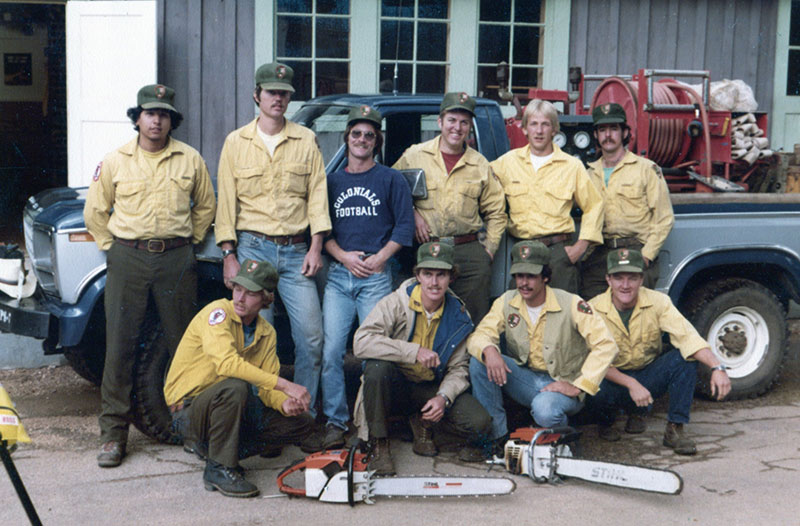Expert Q&A: Stephen J. Pyne
By Amy Nelson
Stephen Pyne is a historian, urban farmer, and emeritus professor at Arizona State University. He spent 15 seasons on a fire crew at the North Rim of Grand Canyon National Park and another three writing fire plans for the National Park Service. He has written big-screen fire histories of America, Australia, Canada, Europe (including Russia), and Earth, along with textbooks, popular works, and a memoir of his seasons with the North Rim Longshots. Stephen holds a BA in English from Stanford University, and an MA and PHD in American Civilization from the University of Texas, Austin. He is currently writing a fire history of Mexico.
How did you become interested in fire?
It was completely serendipitous. A few days after I graduated from high school in Phoenix, I found myself at Grand Canyon National Park, signing in as a laborer. While I was doing that, the park received a phone call from one of the fire crew members on the North Rim, who announced he wouldn’t be able to make it. They were anxious to fill the position, and there I was. They asked if I wanted to go to the North Rim and be on a fire crew. I was 18 and I said, “Sure!” I’d never been to the North Rim, and I had no idea what I was agreeing to. They flew me over in a light Cessna in a big storm. It was a magical sort of initiation into a different world. I loved it. I did it for 15 seasons.
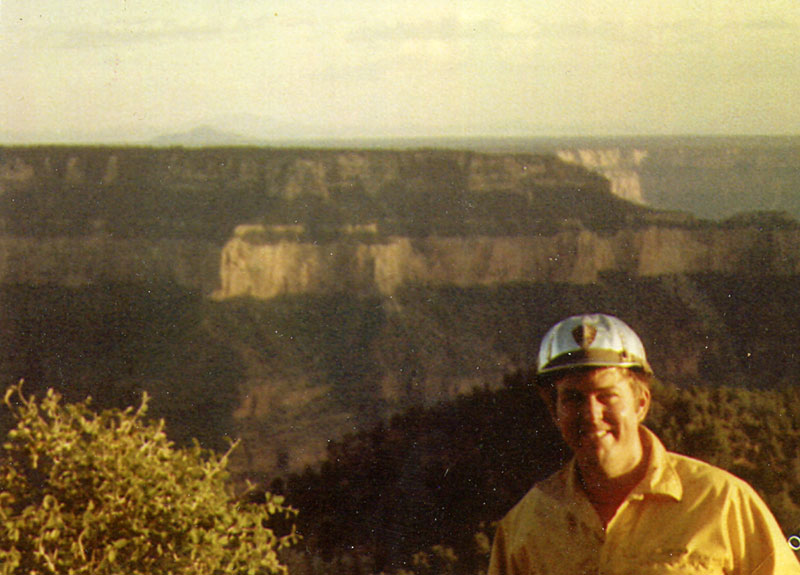
So, I had a personal interest in fire, but when I went to college and then graduate school, I never studied fire formally because almost no place taught it back then. It was a good 10 years until I began putting those two lives together.
I understand that fire has been on the planet since the conditions were there to enable it, around 420 million years ago. What do we know about the role fire played in creating and distributing Earth’s ecosystems?
The earth is a fire planet – the only one we know of. It has fire because it has life, and fire is a creation of the living world. Life created the oxygen and life created and arranged fuels. Thanks to humans, life supplies most of the ignitions. Even the chemistry of fire is a biochemistry. Fire takes apart what photosynthesis puts together.
For Earth, fire is a feature, not a biotic bug. It is truly elemental.
Well before people, lightning was a more than adequate source of ignition. As soon as plants begin colonizing continents, we have records of fires in fossil charcoal. Fire has been continuous. That does not mean that every square yard of Earth’s surface has burned and burns regularly. It just means that terrestrial life and fire have co-evolved. Fire takes its character from its context. It burns one way in a tall grass prairie, and a very different way in a lodgepole pine forest, a sequoia grove, or peat. Fire was not introduced in the Anthropocene. It was around long before people. For Earth, fire is a feature, not a biotic bug. It is truly elemental.
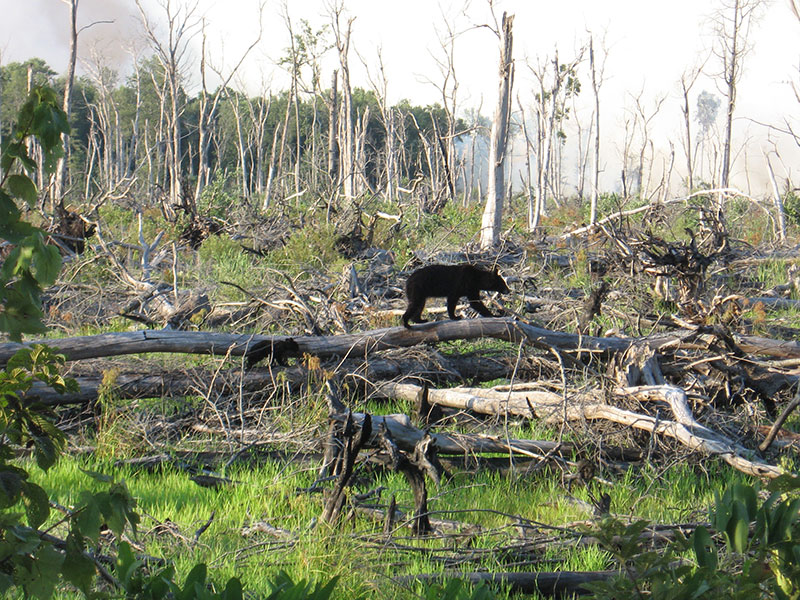
You have said that “fire does the biological work nothing else does.” Can you tell us a little bit about that biological work and some of the ecological benefits that fire naturally brings?
In many ways, fire is a broad-purpose, broad-spectrum catalyst. It interacts with everything out there. People are always asking, “What drives fires?” My response is that fire is like a driverless car. It barrels down the road, integrating everything around it. In certain places, one thing looms large: maybe it’s a sharp curve called climate, or a tricky intersection where town and country come together. The fire integrates all of those things. We tend to simplify fire into a physical tool that reduces fuel, a kind of flaming wood chipper. But it’s also involved in recycling, decomposing, and releasing nutrients that are otherwise locked up, say, in large logs. This is particularly true in arid and semiarid climates where biological decomposition is not very aggressive. Fire opens a site to sunlight and wind, so it changes the microclimate. It cycles nutrients. It cycles plants and organisms. In a sense, it cycles landscapes.
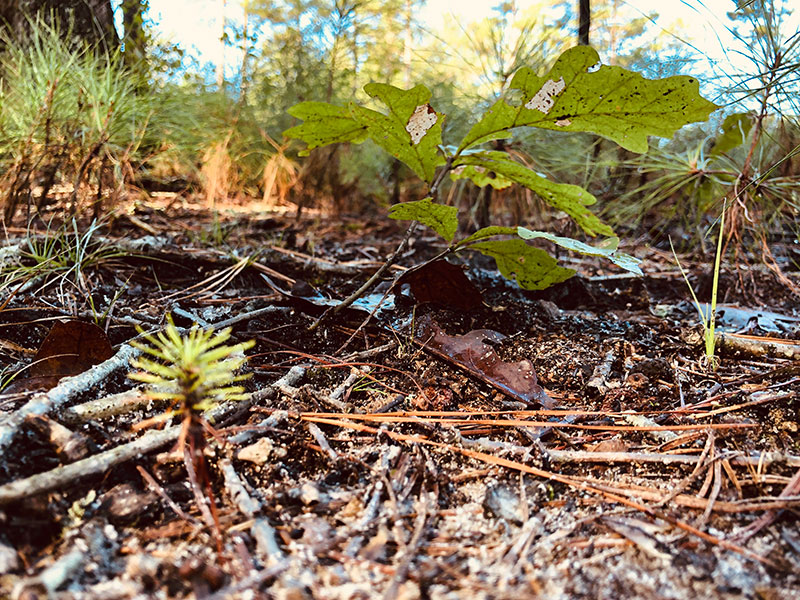
We think of fire as a very powerful, destructive force that comes in and tears something apart, but as long as the conditions remain the same, what was there before will grow back. In that sense, fire is simply a “renewer.” Take, for example, old swamp areas where you have lots of organics that collect in basins. They may normally be very wet, but during big droughts they dry out. Fire will get in and very slowly scour that out, down to the new water table. Well, that allows that system to continue. Otherwise, it would fill in and no longer be a wetland. Tall grass prairie is another great example. If you don’t burn that routinely—on a two-, three-, or four-year cycle—that place will be overrun by woody plants. Without fire, it will disappear. We’ve seen many, many landscapes become overgrown with trees, and then those trees in turn become fuel, and the entire system changes. Fire is integral to that. In some cases, it’s a cause, and in some a consequence, but it’s always a catalyst. We don’t have anything else that can do all that fire does. It fertilizes, fumigates, and creates new sites, which is the basis for agriculture. “Slash and burn,” which is commonly used as a pejorative term, is actually applied fire ecology.
You write of First-Fire, Second-Fire and the Pyric Transition to Third-Fire. For the benefit of those not yet familiar with your work or these terms, can you briefly describe these milestones in the history of fire on Earth?
First-Fire is my term for the fact that Earth is a fire planet. For 420 plus million years, with or without people, Earth had fire regimes. But then, around two million plus years ago, roughly at the start of the Pleistocene, creatures arrived and became a genus which could manipulate fire systematically.
For a while, there were a bunch of hominins who could start fire and maintain fire. There is a lot of evidence that cooking food was fundamental to our survival and indeed our flourishing: it released nutrients, detoxified food, and gave us a huge caloric boost. Next, we began cooking the landscape; shaping it in ways that created a habitat more beneficial to us. We have exceeded that more recently and have begun to cook the planet. The hominin capture and use of fire is what I think of as Second-Fire. It still operates within the same constraints as First-fire: it occurs within living landscapes and subject to seasons and growth cycles. There are all kinds of checks and balances. There is an old concept of a “second nature” where people, by wit and artifice, take the raw stuff of nature and make a second nature out of it: they tame, farm, and domesticate it in some way. Apply that to fire and you have my concept of Second-Fire.
Our fire power took us to the top of the food chain, but we still wanted more. So we had to find more stuff to burn, and we found it by going back into the geologic past and taking landscapes that were once living but had fossilized (what I like to call “lithic landscapes”) into oil, coal, etc. This is my sense of Third-Fire. It is qualitatively different in that it only exists because of us. The old baffles and barriers no longer apply. Third-Fire can burn day and night, winter and summer, wet or dry. This has given us enormous power.
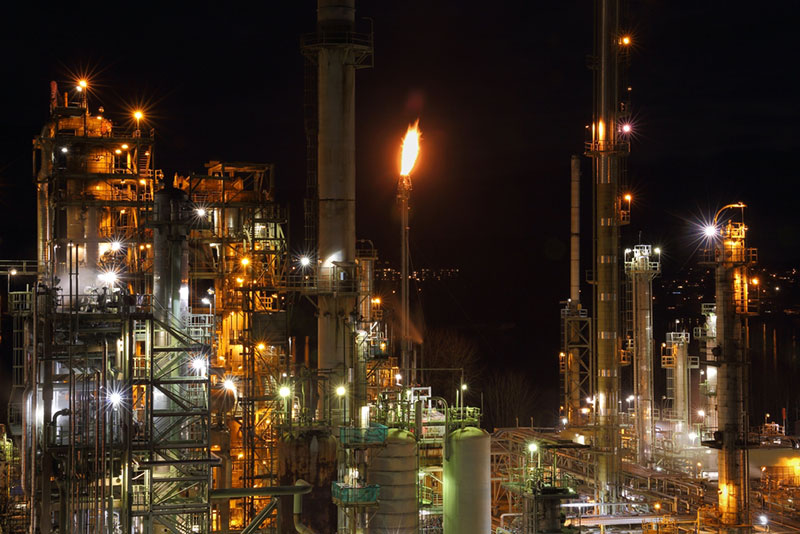
But precisely because we’re no longer bound by old constraints, it really is Prometheus unchained. There was a reason Prometheus was shackled, and now we’ve released him. In doing so, we have overloaded all of the places that could absorb this burning: the air, oceans, and land. We’ve overwhelmed everything.
Can you talk about the role of economy and class in transitioning to Third-Fire?
The conversion to coal is usually taken as an emblem of the industrial revolution. If you’re going to burn wood, you’re ultimately going to exhaust all of your fuel, so you have to find something else to burn to make all of the machines run. Burning coal was not something everybody around the world was doing. You not only had to have the natural setting for coal, but also the money and the political and social organization to get it. Even today, the access and use of fossil fuels is pretty much a synonym for a developed country.
Third-Fire has two components. One is simple power—raw energy—subject to all human use and misuse, and class and caste arrangements that any new source of power or wealth could have. The other is that this particular source of power is based on combustion: controlled use of fire. That has all kinds of ecological consequences apart from the power. Both are now, in a sense, unshackled.
You mentioned checks and balances. What checks and balances existed with First- and Second-Fire, in terms of carbon release and storage?
It is paradoxical. Fire tends to be conservative unless the circumstance or the larger setting changes. Even if you have a crown fire burning through the canopy of lodgepole pine, or jack pine, that is how that forest reseeds. The flame passing through the canopy is what releases the cones, which are sealed with a kind of wax. Even in those fires, most of the biomass is not burned. The tree trunks are still there. What burns are the needles, small twigs, branches and so on. The amount of carbon may be quite large, but it can be recaptured quickly as grasses and shrubs return, so eventually, it becomes recycled. You may be recycling on the order of 100, 200 or 300 years, but all of it will still be recycled and rebuilt. But if conditions change – climate, for example, or the presence of invasive species – then what appears will be suited to those new circumstances. A new landscape will emerge.
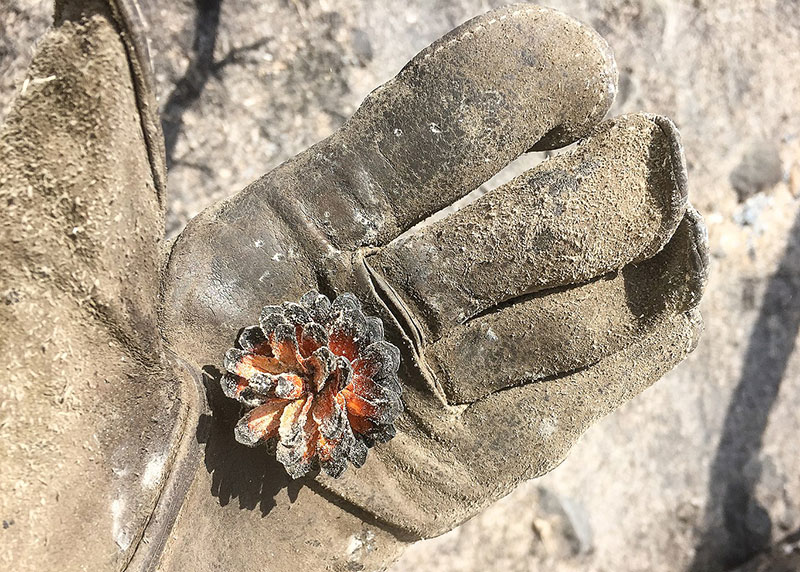
Fire, paradoxically, is one of the ways in which we can “re-minerealize,” take carbon lodged in biomass and put it back in the ground. We are constantly discovering the ecological role of fire that had never been thought of because nobody ever looked. We really had no fire science. And smoke! We thought it was just toxic effluent that boils out of fire, and we wished it would go away. It turns out that smoke has a biological component. It can be used to retard insects and infestations, and it can stimulate fluorescence in a number of plants, including pineapple! We’re finding out all kinds of stuff about carbon and soils now, and the value of biochar. We’re learning so much about fire as part of living landscapes.
In introducing the concept of the Pyrocene, you compare this epoch to the Pleistocene in terms of its power to reshape Earth. You write that “…instead of implacable ice, we will have unquenchable fire.” If nothing changes, what do you think the rest of the Pyrocene will look like?
It will be more of the same, but accelerating, until the world is remade, and continues to be remade. We don’t know all of the interactive effects. That is what is really disturbing for me. My notion of a Pyrocene grew out of listening to discussions at conferences where people would say that the future is not only dire, but strange, thanks to climate change. They said that we have no narrative by which to connect the future to the past, and no analog. It seemed to me, as a fire historian, that we have a great narrative. It is a continuous story of fire, especially human use and misuse of it. We also have a great analog. Think about the parameters of an ice age and the changes that are wrought when ice comes, and then recedes. We are creating an analogous set of conditions, except it’s informed by fire. Primarily it is fossil fuel combustion, but that is now colluding with other kinds of fire to create mass extinctions, sea-level changes, large biogeographic shifts, and a changing climate. These are among the chief attributes of an ice age, and we’re creating its fire equivalent.
In what ways do you think humans have failed to fully understand fire?
There are many. In terms of intellectual support for understanding fire, the Enlightenment was a very mixed blessing because fire disappeared as a category of study. The only fire that we were interested in was the fire that ran machines. The discovery of oxygen made fire a subset of chemistry, and something shaped by its physical surroundings. We could explain fire by reducing it to those simple elements, and the biology really didn’t matter. The biology was just fuel. Biology is a whole lot more than fuel, but if you define it as fuel only, then you’re going to get programs like many of those we have now, where all of our metrics are tied to fuel alone. Reduce the fuel, do the physics, and then the ecology will sort itself out. But is that solving the ecological issues?
The Enlightenment was a very mixed blessing because fire disappeared as a category of study. The only fire that we were interested in was the fire that ran machines.
Fire returns as a category of study in the late 19th century as part of a global project of conservation, which tried to rein in the havoc that imperialism was wreaking around the globe by logging and landclearing and the horrible fires associated with that process (megafires larger and more lethal than those we have seen recently). Part of that effort was to set aside reserved lands to spare them from fire and axe. While that task could easily have gone to agronomists or zoologists, it was given to foresters. Forestry had emerged out of central Europe, which has a temperate climate with no regular cycles of wetting and drying and so no natural basis for burning. Foresters took that anomalous world as normative, which made them perhaps the worst group for this responsibility. They saw fire simply as a problem of social behavior. The first professional forester in the U.S., Bernard Fernow, was an emigre from Prussia, and he dismissed America’s fires as the result of “bad habits and loose morals.” There was no sense that fire might have an ecological purpose. It was like malaria or smallpox, and the world would be better off if we took it out. Fire was a stigma of the primitive. If you used fire, you were considered pre-rational. So, we abolished thousands of years of human experience dealing and living with fire. In the name of science, we extinguished that fire knowledge just as we extinguished the fires.
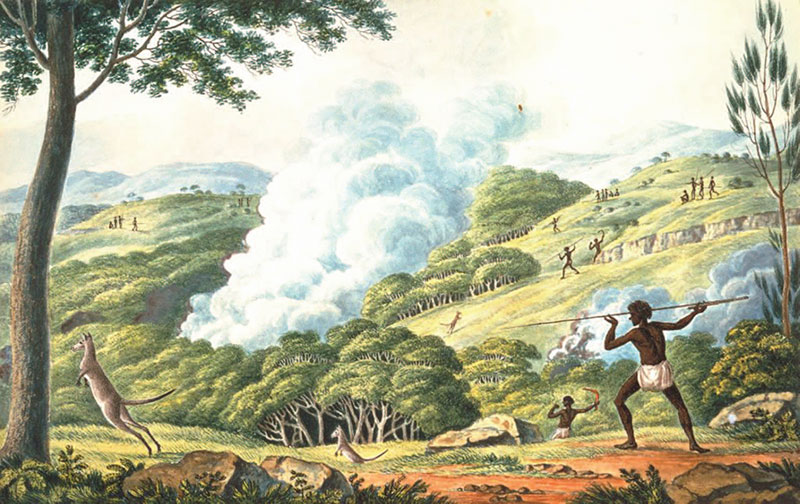
What does history tell us about humanity’s relationship with fire before Third-Fire?
Fire was just all around us. It wasn’t merely a tool; it was a constant presence. If you were in a building, it was warmed and illuminated by fire. It may have been built of materials that had to pass through fire to make glass, bricks, and metals. Fire was used in almost every part of human technology. It is remarkable to me that we managed to survive. I mean, every human being, child, malcontent, rebel, or deranged person could start a fire that could destroy a town. The fact that we had so few shows an astonishing degree of social control.
In some ways, fire was a companion. It was always with us. Then, as we made this “Pyric Transition,” we began replacing fire with fossil fuel-powered equivalents. We can get artificial fertilizers. We can make nitrogen. We can get biocides. We don’t need fire to fumigate. We can dispense with smoke and replace it with gases that are more noxious and less environmentally friendly, but invisible. Fire disappeared from our homes and cities, and in many ways, I’m happy for that. (We don’t have entire cities routinely burning… until very recently.) We took fire out of agriculture.
Fossil fuels now run the machines, provide the fertilizer, power the pumps for irrigation, provide herbicides and pesticides, etc. All the things that one fire could do are now done by a whole bunch of things. We’ve also lost the fallow. [Before Third-Fire] you had to fallow because, at some point, you needed the ecological jolt of fire and you had to have fuel to burn. But [modern] agronomists hated the idea of fallow because they saw it as superstitious and wasteful. It turns out that the fallow supported a great deal of biodiversity. That’s where you got the biochar back in the soil. All of these other [beneficial aspects of fire in agriculture] were dismissed in the name of improved productivity and efficiency, and now we’re seeing the consequences.

Then we carried [this mindset] into our wild and public lands, which were to be preserved and protected from the onslaught set into motion by the power unleashed by steam.
Before our Third-Fire, we had, in effect, a mutual assistance pact with fire. A long time ago, long before we were a species, the hominins would take care of fire and introduce it to new places and settings. And fire would empower hominins to make those settings habitable.
What do you think is the most important lesson for us to take away from the history of fire on Earth?
To put it simply: good fire made us, and bad fire may unmake us, and that choice is ours. We have a species monopoly over fire. That is our ecological signature. It’s what we do that no other creature does, and we made the conditions that are now driving [climate change and megafires]. We can undo it if we wish.
…good fire made us, and bad fire may unmake us…
What does a healthy relationship with fire look like, and how can those of us in conservation, ecological restoration, and regenerative design help to establish such a relationship?
That’s a very pertinent question, and I like it because you use the term relationship. It’s not just, “How do we put fire in our toolbox and apply it?” We talked about tending fire. Many of the terms we use for fire are the same as we use for raising children. You have to care for it, feed it, and train it. You have to provide boundaries for it so it can be used in ways that are mutually beneficial.
I think that when most people in the developed world think of fire, they think of destructive fires. Much of the damage has been done by taking fire out of systems that were used to it. It turns out to be pretty easy to take fire out of a system, particularly with modern machinery. But eventually, it becomes very hard to put it back because conditions have changed. The fire will integrate the conditions that exist. It’s not like you can just drop it into a landscape like you would a wolf. The fire will synthesize its surroundings. It may help catalyze a new landscape that’s not what you wanted. Fire is a fundamental part of many ecosystems, and for the ecosystem you’re concerned with, you first need to know the evolutionary and historic role of fire. Then we need to determine if we can restore that or work to create something more accommodating than before. Getting back to what was may be impossible, but we can work with what we’ve got in better ways. Fire is a part of that, not just as a tool, but as a domesticated ecological process. [Working with fire] is a relationship, and it brings with it constraints and a certain kind of ethics, and it’s our responsibility. A lot depends on us.
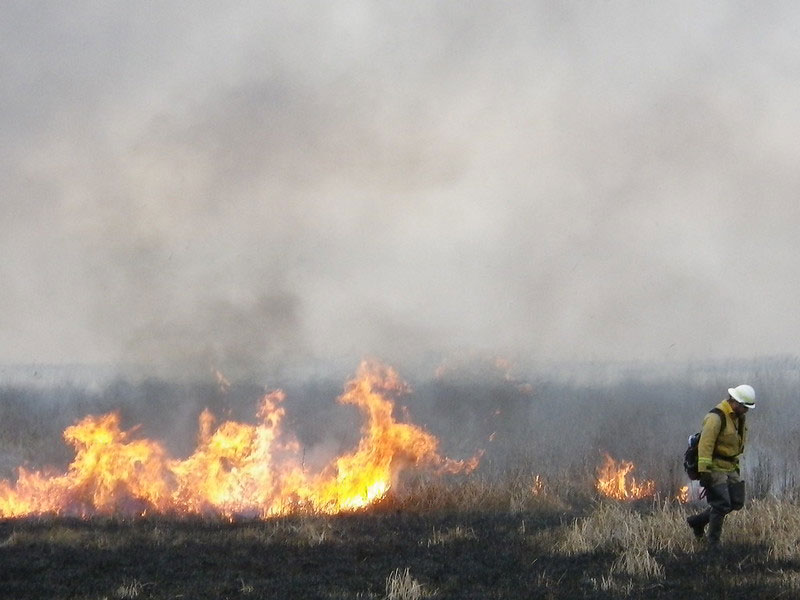
Indeed, you have written that “Fire isn’t an ecological pixie dust that sprinkled willy-nilly over the landscape will magically restore or make everything right.” How can practitioners learn more about the use of fire in ecological restoration?
Fire science didn’t really exist for a long time, and then it appeared in the form of fire behavior: we wanted to know the physics and chemistry of fire so we could control it. It even got weaponized. The study of the ecology of fire didn’t get going until about 30 years ago. The Association for Fire Ecology is only about 20 years old. The Fire Ecology Journal followed a few years later. There is a fair amount of literature out there, but we have a long way to go.
Part of the problem in the past has been a reluctance to intervene. In the late 1960s and ’70s, fire restoration attracted interest but often because naturally ignited fire was seen as appropriate in wilderness. But if most fires are set by people, and the landscapes are in some ways cultural landscapes in which fire was an integral part, then we must overcome the ideological or philosophical concern about intervening. In many cases, removing ourselves and our fires proved damaging – creating fire-famished landscapes. Now, there may be places where we just want to see whatever nature coughs up, and that is interesting and useful. And fine, but let’s not pretend that that will somehow self-restart the old regimes. Even in legal wilderness, we have not been willing to let fire play its full role because it may not stay in that zone, and then we have a huge social and political crisis to deal with.
There’s a very interesting story evolving right now at Yosemite National Park. A fire started in the south part of the Mariposa Grove, which is like a biotic Parthenon—one of the great centers for giant sequoias. The National Park Service has been treating that area for some time, so the fire is burning around those treatments, and not damaging much within. At the same time, the park has been taken to court and sued to end some heavy thinning projects around the lesser-known Merced Grove further north, which has dodged several large fires over the past 15 years. The park was aggressively treating that area to the point where they could bring in fire, but the Earth Island Institute took them to court to shut down the cutting. I’m not sure the park could even use prescribed fire under the preexisting conditions and control the flames. So here we have competing values and environmental groups. How do we sort that out? We probably will save the Mariposa Grove, but all the sequoias around it may be at risk. And what about the other groves? We’ve lost about 20% of the world’s mature sequoias in the last three years.
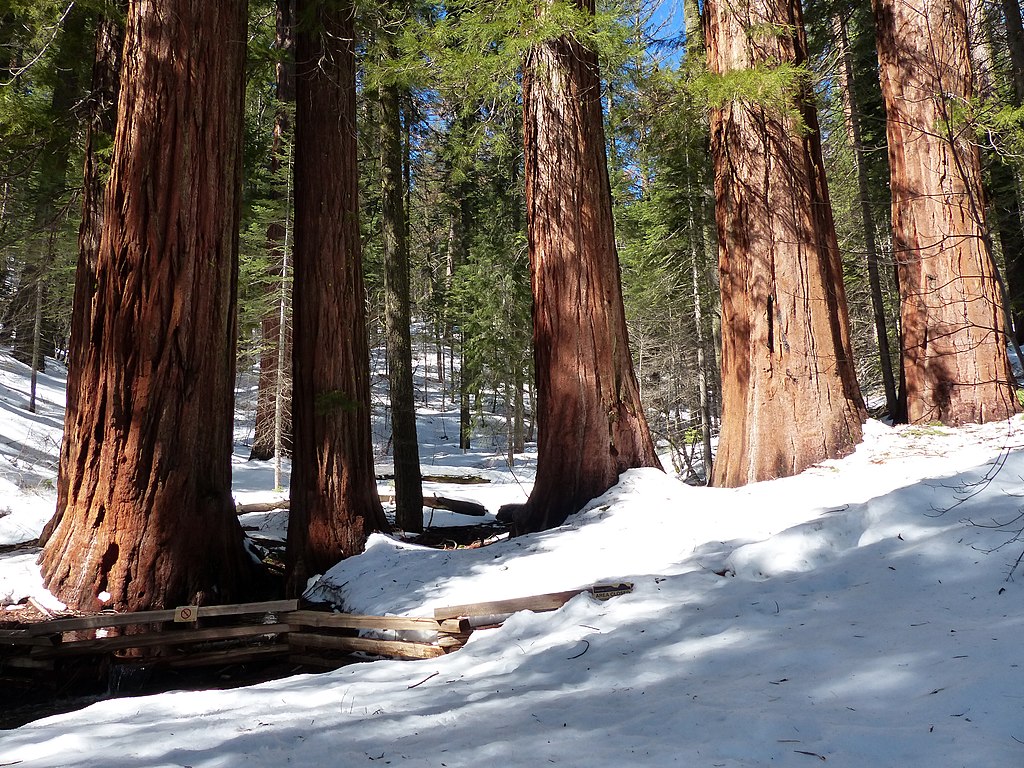
It sounds like we still have much to learn while there is a growing body of literature. What research do you think is most urgently needed?
We are finally starting to get into the human dimensions of fire. There was an interest in fire and restoring fire, particularly in the U.S., partly because we could see large fires coming about if we didn’t intervene, but also because fire was seen as natural. It was part of a wilderness and preservationist movement. Increasingly, we see that all of the problems with fire are related to people. Ecologically, we are a keystone species for fire. Removing us—or replacing our old practices with chemicals and machines—as we are doing with the pyric transition may unravel biomes as surely as clearcutting and burning Amazonian rainforest.
There is a lot of interest recently in indigenous learning and traditional knowledge. I don’t just mean in a colonial setting, because Europe’s elites were as disdainful of Europe’s peasants as they were of colonial Indigenes. They disregarded thousands of years of agricultural and pastoral knowledge, and the burning that went with it. It was dismissed as unenlightened, irrational, and primitive, and it was suppressed. There are now some movements, even in Europe, in places like Portugal and Spain, to restore traditional, cultivated landscapes because that is how you control fire. We can’t bomb these megafires away. They will overwhelm us. Paradoxically, they are a pathology of the developed world.
You write that spatially and temporarily there is remarkable consistency among the fire practices of hunting and foraging societies of the environment. What are some of the similarities seen in aboriginal fire practices around the globe, historically and today, that could be models for the application of fire in conservation and ecological restoration?
The geography tends to be characterized by lines of fire and fields of fire. Lines of fire are basically routes of travel. Most aboriginal economies travel around the landscape and exploit different resources in different seasons, and their fires move with them. They burn different places at different times in different ways. In some places, they don’t burn, and in some places, they burn perimeters very early so that that area will be protected later. This is also true for accidental [aboriginal] fires. They tend to leave lots of fires lying on the landscape. Why isn’t this destructive? It isn’t because you’ve been doing this for hundreds or thousands of years so the land’s accommodated it. Such events are no more a disruption than is a rainstorm.
Fields of fire are sites used for harvesting animals or plants. You burn on some regular pattern or matrix. Temporally, you tend to start early in the season, and you begin by burning very lightly. You expand as the dry season matures, but you’ve already done a lot of burning, so these fires are not going to blow up on you. Or, instead of wetlands, there are historic accounts of people on the Great Plains of Canada who used snow in a similar way. As the snow melt starts, they burned the dry patches. The old burns, the snow, the wet spots, the dry patches – each checked the other. This would go on for two weeks, day and night. You create this huge, intricate jigsaw puzzle of burning.
Are we seeing agencies and organizations beginning to turn to indigenous knowledge and methods of using fire in some of their prescribed burning?
Yes. The Nature Conservancy, particularly, had a great global fire initiative program for a while and was quite skilled at developing that. I’ve been writing a fire history of Mexico recently, and it turns out that TNC was absolutely fundamental in reconnecting Mexican researchers and agencies with their own indigenous heritage instead of letting them go with a high-tech approach of helicopters, airplanes, and hotshot crews, which is where they were headed. We are starting to learn from the past and adapt it to parent circumstances.
In your book The Pyrocene, you mention the Global Fire Partnership, which was formed in 2002 by the Nature Conservancy, the World Wildlife Fund and the IUCN with the intent to address the causes and consequences of altered fire regimes. What has that partnership yielded?
It was dissolved during the recession because the funding for it disappeared. They did, however, produce two publications, one in 2006 and one in 2007, that are very useful references.
How do “bad fires,” those megafires that are result of past decisions and practices impact watersheds, water quality, and aquatic life?
Part of the issue with megafires is that they are much larger than historically would’ve been possible when the landscape was patchier. Area is not necessarily the biggest measure of a fire’s severity, but these fires can overload the air and water to where we can get public health alerts and trashed watersheds. We have seen a lot of concern about damage to municipal watersheds. Some recent studies in Australia reveal the consequences of the 2019-2022 wildfires on riparian zones and watersheds [https://www.publish.csiro.au/WF/WF22046?jid=WFv31n7&xhtml=346312C8-943F-4D0D-9FF9-8635E90107D6].
Like much about fire, the outcomes can be good or bad. Debris flows full of charcoal can damage watersheds with erosion and flood debris, but biochar in the soil can improve water quality. The right fire regime can also improve water capacity. The Illilouette basin in Yosemite National Park has had natural fire more or less restored over the past 50 years. The watershed is far better than comparable places that have not been treated. [See https://doi.org/10.1088/2515-7620/ac17e2 ]
You talk about there being many varieties of prescribed burning and how prescribed fire is less a vaccine than a regularly needed booster. Can you talk about some of the varieties of prescribed burning that you’re referring to?
Prescribed fire has come to be a generic term for any fire set to advance some sort of resource management. Mostly, it applies to pile burning and patch burning. But it can refer to broadcast burning for ecological purposes as well. Tallgrass prairies is a good example. This isn’t about reducing fuel. It’s about ecological enhancement.
In remote areas in the western U.S., we are also seeing a hybrid approach that is sort of half suppression, half prescribed burn, where resources go toward what is called “point protection.” They target main assets such as communities, ranches, municipal watersheds, sequoia groves, etc. To protect these areas, they draw a boxes around them, go to natural barriers, and then systematically burn them. This is not an emergency backfire to halt a tsunami of flame, but rather a kind of prescribed burn done under urgent conditions, and it may go on for a couple of weeks. They’re trying to make sure their fire doesn’t do damage and can actually result in some good fire. They’re actively pushing and pulling that fire to create conditions that will allow them to burn some decent acreage. Prescribed burning as we’ve done in the past doesn’t scale up. We cannot burn tens of millions of acres. That burning is being done by large, uncontrollable wildfires under the worst conditions, with results we don’t want. A fraction of those wildfires are in the range of ecologically good fire, but this is not a way to do it. It’s sort of like COVID. You can wear a mask, social distance, and vaccinate, or COVID will do it for you. And right now, we’ve decided we’re willing to have the wildfire do it.
Would you say that that sort of pushing and pulling of this hybrid approach is the way of the future of fire management… of coexisting with fire?
Yeah. It has been allowed for over a dozen years by federal policy. It has become a standard feature in the Southwest. Like anything it can be done well or poorly, but done right, yes, it’s the future of wildland fire management in the American West.
Speaking of policy, so many communities have experienced devastating megafires in the last five years. Are we seeing any changes in policy related to the use of fire in restoration or in fire-related land management?
We see some but not at scale. For all of my grousing, the U.S. is still well ahead of most of the world in this. Australia is becoming very active in working with Aboriginal peoples on cultural restoration of the landscape. Australian Victor Steffenson has written a delightful book, Fire Country, that makes a great case for restoring the old burning ways. We are starting to see some progress in Mediterranean Europe, which is being shredded by these large fires, toward reinstating former land use and fire practices. But for the most part, the reaction is that these fires are a disaster, and they will be treated by emergency responses. That only leads to more damage, more air tankers, and more crews.
What we need for restoration is a three-part program. First, we must show that we are protecting vulnerable communities. We spent 50 years building communities without any care for fire, and many are at extreme risk. Now we have a huge retrofit problem, which is always much worse than trying to design from the beginning. We have to protect those communities, or nobody is going to care about the rest of it. They’re just going to see all fires as damaging. It is clear that we need to focus on what is been called the “home ignition zone,” where these fires enter. Fires do not come through communities as a tidal wave of flame. They come as a blizzard of sparks. It is like a swarm of invading locusts, and they will find the points of vulnerability. There’s plenty of research on this. The question is, how are we going to convince people to do the remediation? Ultimately, there are real limits to volunteerism. We have learned, even with a pandemic, that there are limits to mandating. But that is how we solved the building fire problem a century ago: with fire codes, building codes, and infrastructure. We need these wildland communities to be defined as “urban” because once you do that, you have an urban fire problem, and we know how to respond.
Second, we need to be taking care of our landscapes – our larger countryside and public wildlands. That’s going to take a few decades, and there are a lot of ways to do it, but I don’t think people will be very forgiving of what goes on or be willing to pay for it if they feel communities are being ignored.
Third, we must start reining in climate change.
The good news is that fire is so interactive that there are many points of intervention. We can do lots of things, and they will add up. We need to do a lot of these things anyway. Why are we having so many large fires started by power lines? This is absurd. We’ve known for decades we need to fix our grid. Well, now let’s redo the grid, tie it in with renewables. Let’s rethink it. And fire can be part of that. That would reduce a major threat to communities right there. We need better control over land use in some of these settings. Fire can be a part of that.
In a previous issue of Leaf Litter on the history of ecological restoration, several experts in a panel discussion mentioned the participatory and celebratory nature of ecological restoration, particularly when it involves fire. Would you agree?
Fire used to be something everyone had access to. Then in the name of public safety it became a government monopoly. Part of fire restoration has a cultural component (especially where Indigenous peoples are involved) and elsewhere a recovery of tradition, arguing for a landowner’s right to burn. Clearly everyone can’t burn wherever and whenever they want. But we need a wider community with access to fire. Prescribed fire councils are helping spread skills and freeing up legal space [http://www.prescribedfire.net/]. So are changes in liability laws. Even California has revised its laws regarding fire use to encourage more burning.
I grew up in the outskirts of Phoenix, where people burned their lawns in the spring, before the rainy season. It was Bermuda grass. You’d burn it, and in five minutes it’d be over. Everybody did it, and it was controlled. Today I have to run a de-thatching machine powered by gas, put the clippings into plastic bags on the curb to be picked up by a truck (diesel) and taken to a landfill to decompose to methane. This is the kind of absurdity that the pyric transition can lead to.
I spent 15 years on a fire crew, and we had lots of fires. At the end of the day, we’d come back and discuss what happened… around a campfire. There’s something to be said for the fire ceremony. There are so many ways we could reconnect people with fire. Fire is important, of course, and interesting, undoubtedly, but it is also fun. Who doesn’t enjoy a candle, a bonfire, a crackling hearth – or a well burned landscape?
